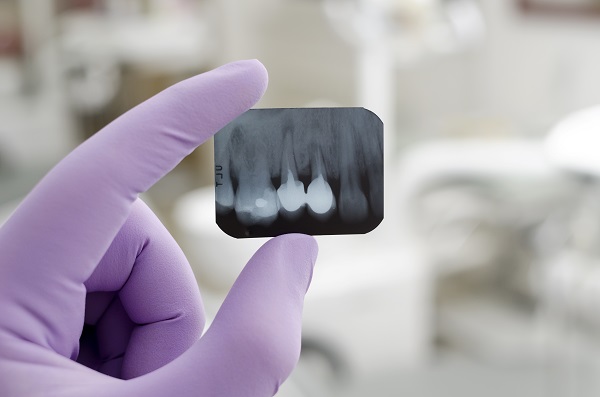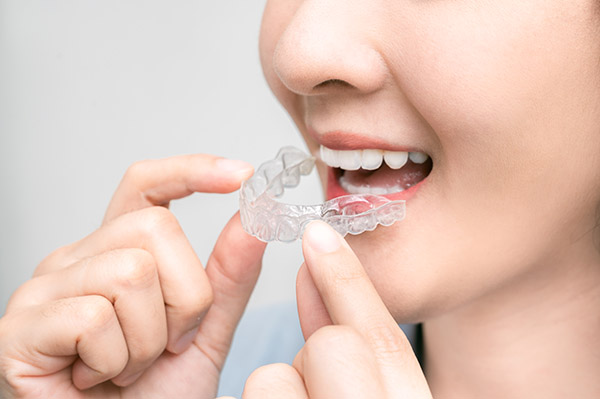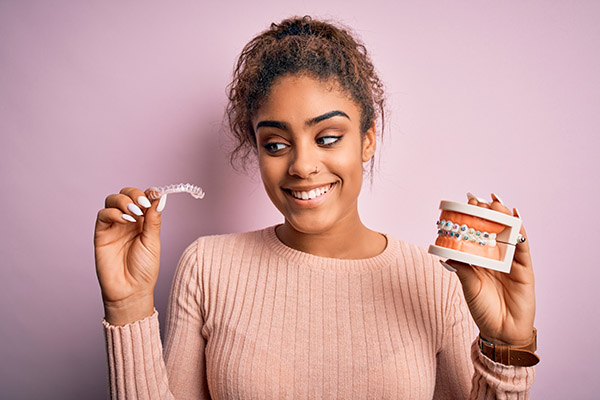Digital X-Rays and Radiation

Digital x-rays reduce your exposure to radiation by up to 80% compared to traditional ones. X-rays are an essential diagnostic tool dentists use to examine the insides of a tooth, gum tissues, and the bone structures in the mouth.
Getting a digital x-ray is a non-invasive procedure that does not cause any pain. It quickly produces the images needed to address the patient’s mouth, eliminating the need for multiple visits or waiting for results.
X-rays have been used in dentistry for over a century. Traditional x-rays involve using a film to capture images of the patient’s internal structures. It often took hours to process the film and get the results back. Digital technology has made the process a lot smoother and more affordable. The fact it lowers the patient’s exposure to radiation is a nice bonus.
While traditional x-rays leave patients exposed to more radiation, it should be noted that the levels of radiation patients are exposed to are less than what sunlight exposes them to daily. It is a negligible amount of radiation, but less is viewed as better since radiation is bad for the body.
How digital x-rays help to keep your mouth healthy
The process of getting digital x-rays usually involves wearing a large lead blanket or apron that shields the rest of your body from radiation. An x-ray sensor is then placed in the patient’s mouth to take digital images of the patient’s internal structures.
The type of sensor used varies depending on the type of x-ray being performed. These sensors typically do not cause any discomfort, but they can trigger some people’s gag reflex. Children are more likely to feel uncomfortable when x-rays are taken due to their smaller mouths and stronger gag reflex. Patients with sensitive gag reflexes should let their dentist know so accommodations like using smaller sensors can be made.
Some of the commonly used types of x-rays in dentistry include:
- Bitewing x-rays: These are typically taken once a year to detect cavities inside and between teeth. It can also be used to evaluate the bone structures that hold teeth in place
- Periapical x rays: Also known as PAs, these are used to get a complete picture of a tooth’s internal structures from its roots to the top of its crown. They are typically recommended when a patient complains of symptoms that originate from a specific tooth. PAs can be used to detect deep decay, damage to bone structures around a tooth, and abscesses
- Occlusal x rays: These are used to examine the internal structures of the floor or roof of a patient’s mouth. They can be used to detect tumors, jaw abnormalities, impacted teeth, and supplemental teeth
- Panoramic x rays: These are recommended every three to five years to paint a complete picture of a patient’s mouth. They are used to prepare for surgical procedures or orthodontic devices
Digital x-rays are safe
Digital x-rays help to evaluate the internal structures in your mouth. Call or stop by our Reston clinic to learn more about how digital x-rays work.
Request an appointment here: https://www.orthodonticprecision.com or call Precision Orthodontics & Pediatric Dentistry at (703) 391-8800 for an appointment in our Reston office.
Check out what others are saying about our dental services on Yelp: Digital X-Rays in Reston, VA.
Recent Posts
Clear aligner orthodontic therapy is a way to address a range of tooth and jaw misalignments, including but not limited to crooked teeth, overcrowding, gaps between teeth, overbites, underbites, crossbites, and more. This review focuses on clear aligner therapy and the benefits it can provide for patients.Clear aligner treatment is a simple and convenient way…
Many have heard of traditional metal braces, but fewer are familiar with how lingual braces for orthodontic therapy work and the unique advantages they can offer. This review discusses the basics of lingual braces to help you determine if treatment is right for you according to your needs and treatment preferences.Lingual braces are more discreet…
At certain points in life, orthodontic therapy may be more helpful and necessary. Take the adolescent years, for example. At this time of life, people are particularly mindful of their appearance and may feel self-conscious. Teens who have crooked teeth can get relief and get a new, straight smile. A visit to the orthodontist can…
Maintaining the position of the teeth after orthodontic treatment requires the use of dental retainers. Read on to learn about the different types of retainers available. As soon as the braces or aligners come off, your teeth will begin repositioning themselves to where they were before treatment. To avoid relapse, you should use retainers. They…


